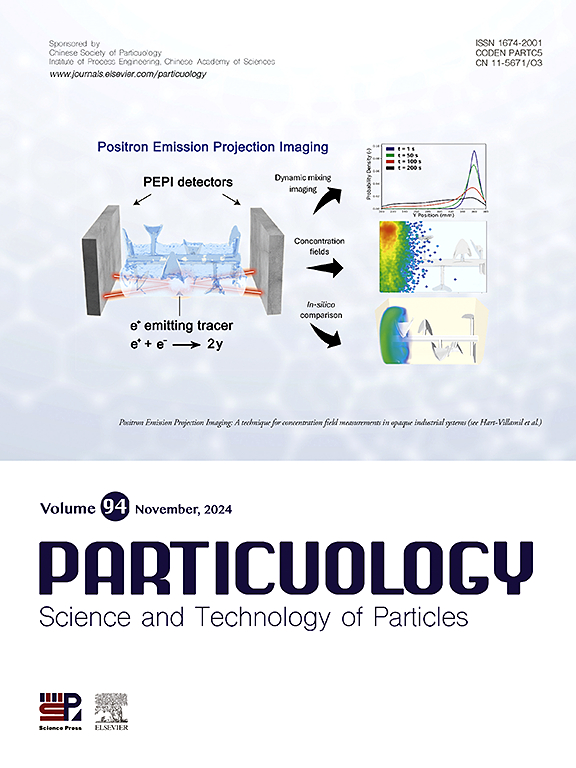Influence of surface-active agents on the dynamic wetting film rupture: Gas migration and surface nanobubbles formation
IF 4.1
2区 材料科学
Q2 ENGINEERING, CHEMICAL
引用次数: 0
Abstract
In this research, precise motion control and synchronized high-speed microscopic dual-wavelength interferometry were employed to investigate the impact of surface-active components on the rupture behavior of wetting films. The findings unveiled a novel mechanism for wetting film rupture at hydrophobic interfaces, propelled by gas migration towards the solid-liquid interface, resulting in the nucleation and growth of surface nanobubble. Salt ions accelerate film rupture by reducing electrostatic interactions and enhancing gas transfer, whereas surfactant adsorption immobilizes the gas-liquid interface through the Marangoni effect, thereby postponing rupture by impeding gas migration and surface nanobubble formation. Furthermore, surfactants influence the kinetics of three-phase contact line formation, where variations in molecular structure, solubility, and ionic properties contributing to differing levels of friction, and thereby affecting the overall dynamics of wetting films.

表面活性剂对动态润湿膜破裂的影响:气体迁移和表面纳米气泡的形成
本研究采用精密运动控制和同步高速显微双波长干涉技术,研究了表面活性成分对润湿膜破裂行为的影响。这一发现揭示了疏水界面上湿膜破裂的新机制,由气体向固液界面的迁移推动,导致表面纳米气泡的成核和生长。盐离子通过减少静电相互作用和增强气体传递来加速膜破裂,而表面活性剂吸附通过Marangoni效应固定气液界面,从而通过阻碍气体迁移和表面纳米气泡的形成来延缓破裂。此外,表面活性剂影响三相接触线形成的动力学,其中分子结构、溶解度和离子性质的变化会导致摩擦水平的不同,从而影响润湿膜的整体动力学。
本文章由计算机程序翻译,如有差异,请以英文原文为准。
求助全文
约1分钟内获得全文
求助全文
来源期刊

Particuology
工程技术-材料科学:综合
CiteScore
6.70
自引率
2.90%
发文量
1730
审稿时长
32 days
期刊介绍:
The word ‘particuology’ was coined to parallel the discipline for the science and technology of particles.
Particuology is an interdisciplinary journal that publishes frontier research articles and critical reviews on the discovery, formulation and engineering of particulate materials, processes and systems. It especially welcomes contributions utilising advanced theoretical, modelling and measurement methods to enable the discovery and creation of new particulate materials, and the manufacturing of functional particulate-based products, such as sensors.
Papers are handled by Thematic Editors who oversee contributions from specific subject fields. These fields are classified into: Particle Synthesis and Modification; Particle Characterization and Measurement; Granular Systems and Bulk Solids Technology; Fluidization and Particle-Fluid Systems; Aerosols; and Applications of Particle Technology.
Key topics concerning the creation and processing of particulates include:
-Modelling and simulation of particle formation, collective behaviour of particles and systems for particle production over a broad spectrum of length scales
-Mining of experimental data for particle synthesis and surface properties to facilitate the creation of new materials and processes
-Particle design and preparation including controlled response and sensing functionalities in formation, delivery systems and biological systems, etc.
-Experimental and computational methods for visualization and analysis of particulate system.
These topics are broadly relevant to the production of materials, pharmaceuticals and food, and to the conversion of energy resources to fuels and protection of the environment.
 求助内容:
求助内容: 应助结果提醒方式:
应助结果提醒方式:


